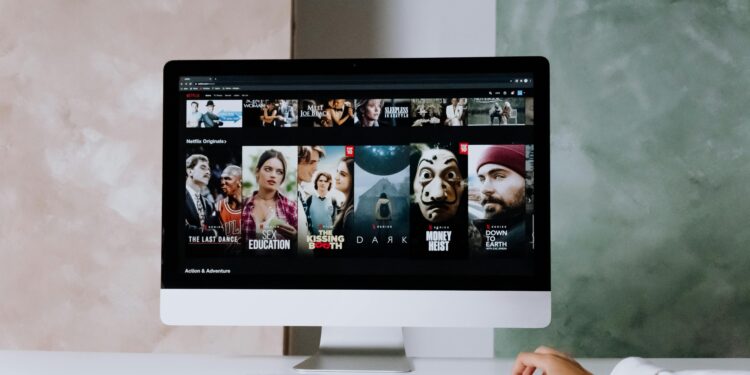As Streaming Services Achieve Milestones, Legacy Media Companies Grapple with the Challenges of a Digital-First World
In a landscape dominated by the rapid rise of digital media, most major streaming platforms are finally achieving profitability or are on the brink of breaking even. However, the decline of traditional cable bundles remains a complex and unresolved challenge for legacy media companies striving to adapt to this new digital-first era.
Last week marked a significant milestone in the streaming industry, with Paramount Global (PARA) and Disney (DIS) both reporting their first profitable quarters in their respective streaming businesses. This shift reflects the industry’s evolution after enduring multiple quarters of heavy losses. Alongside these gains, Netflix (NFLX), NBCUniversal’s Peacock (CMCSA), and Warner Bros. Discovery’s Max (WBD) collectively reported an overall profit of approximately $3.3 billion in the first half of the year—a stark contrast to the $683 million loss these companies faced in the same period last year.
Despite these positive developments, the streaming landscape remains a challenging arena. “It’s a difficult space,” commented Barton Crockett, Managing Director at Rosenblatt Securities, in a discussion with Yahoo Finance. He noted that even though streaming profitability has been achieved, “Netflix is clearly running away with the ball, and the media-based streaming companies are struggling to even get on the field.” For Netflix, which has long been a frontrunner in the streaming race, growth has slowed across the ecosystem as consumers become increasingly price-sensitive.
Crockett highlighted the growing popularity of free, ad-supported streaming television as a major area of expansion. “The free, ad-supported streaming television offerings are really where there’s much more kind of growth right now,” he said, although he acknowledged that finding a pure equity play in this segment remains difficult.
Netflix has adapted to these market changes by shifting its focus from quantity to quality in its content offerings, introducing new revenue streams such as password-sharing crackdowns and advertising tiers, and expanding its content library to include sports, live events, and games. Other streaming services have mirrored these strategies in their bid for survival, but they, too, have faced significant challenges as they strive to scale and reach profitability.
For example, Warner Bros. Discovery has made difficult decisions, such as scrapping multiple projects to slash costs. Paramount Global, in a similar effort, recently laid off 15% of its workforce, resulting in the closure of its TV studio. Disney also underwent a substantial restructuring last year, coinciding with the unexpected return of CEO Bob Iger.
In addition to cost-cutting measures, nearly all major streaming platforms have raised subscription prices, even as consumers become more selective and churn rates remain high. Bank of America analyst Jessica Reif Ehrlich noted, “The prices for subscriptions without advertising are starting to go through the roof. As a result, our view is that consumers will drop several streamers and maybe rotate a little bit more depending on the content cycle.”
In response to these consumer trends, streaming platforms are increasingly bundling their services together, a strategy emphasized by WBD CEO David Zaslav, who remarked, “There’s more strength together.” However, even as media companies seek a truce in the streaming wars, they are confronted with the realization that other aspects of their business are equally problematic.
The most pressing concern for these companies is the continued decline of their cable businesses. Warner Bros. Discovery and Paramount Global recently took a combined $15 billion hit to the value of their cable operations, underscoring the difficulties they face as more consumers abandon traditional cable services.
“Am I disappointed that the trends in the linear business haven’t been a little better? There has been talk about recovery a year, a year and a half ago. It hasn’t really happened. It is what it is. We’re managing this as best we can,” Zaslav said last week.
For years, linear advertising and affiliate fees provided a steady revenue stream for cable networks. However, the shift to streaming has led to a decline in cable subscribers, which in turn has diminished affiliate fees. Moreover, the entry of streaming companies into the advertising market has further eroded the financial foundation that once supported cable networks.
The combined pressures of declining linear networks and substantial debt loads have forced legacy media companies to implement drastic cost-cutting measures, including large-scale restructuring and layoffs. As the industry continues to navigate these challenges, it becomes clear that while streaming profitability is within reach, the road to fully replacing the revenue streams of the past remains fraught with obstacles. The survival of these legacy companies in the digital-first era may ultimately depend on their ability to shrink their traditional operations while expanding their digital footprints.
You might like this article:Rivian Temporarily Halts Production of Amazon’s Electric Delivery Vans Amid Ongoing Supply Chain Struggles











